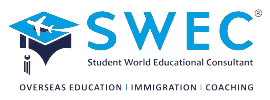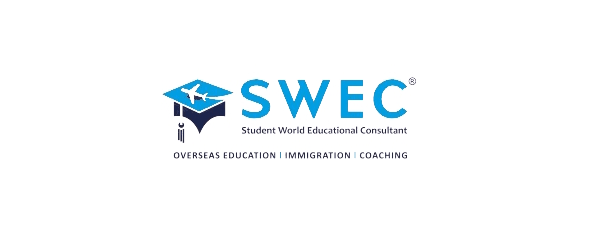A USA-dependent visa allows family members of primary visa holders to join them in the United States. These visas are designed for spouses and children under 21 who wish to live, study, or work in the U.S. while their family member is on a work, student, or fiancé visa.
Understanding the types of dependent visas, their eligibility criteria, and restrictions is crucial for families planning to move to the U.S. Different visas come with varied benefits, such as work authorization, study rights, and pathways to permanent residency. This guide covers the key aspects of U.S.-dependent visas, ensuring that applicants make informed decisions.
If you are looking for expert guidance on USA-dependent visas, SWEC Visa offers professional consultation to simplify your visa application process and improve approval chances.
What is a USA Dependent Visa?
A USA dependent visa is a non-immigrant visa category that allows eligible family members of a primary visa holder to accompany them to the U.S. These visas support family reunification, enabling spouses and children to live together while the primary visa holder studies, works, or participates in an exchange program.
Who Qualifies as a Dependent?
- Spouses (legally married partners) of the primary visa holder.
- Children under 21 (biological or legally adopted) who are unmarried.
- In some cases, the fiancé(e)s and their children may also be eligible.
Why Do Families Need a Dependent Visa?
- To live together with the primary visa holder in the U.S.
- To access educational opportunities (full-time or part-time study, depending on the visa type).
- To obtain work authorization (available for certain dependent visa categories).
- To explore long-term immigration options, including permanent residency (green card eligibility varies by visa type).
If you need assistance with choosing the right USA-dependent visa, SWEC Visa provides expert guidance to help you navigate the process efficiently.
Types of USA Dependent Visas
There are multiple types of dependent visas in the U.S., each associated with a specific primary visa category. Below is an overview of the most common dependent visa types, their benefits, and restrictions.
1. H-4 Visa (Dependents of H-1B Visa Holders)
Who Qualifies?
- Spouse and children (under 21) of an H-1B skilled worker visa holder.
Benefits & Restrictions:
✅ Can study full-time or part-time without restrictions.
✅ Eligible for work authorization (EAD) if the H-1B holder has an approved I-140 (Green Card petition).
✅ Allowed to travel freely in and out of the U.S.
❌ Not eligible for an automatic green card process (must be sponsored through family or employment).
2. F-2 Visa (Dependents of F-1 Student Visa Holders)
Who Qualifies?
- Spouse and children (under 21) of an F-1 international student.
Benefits & Restrictions:
✅ Children can attend K-12 schools (primary & secondary education).
✅ Allowed to travel in and out of the U.S.
❌ Spouse cannot work in the U.S.
❌ Only children can enrol in full-time education; spouses can study part-time only.
3. L-2 Visa (Dependents of L-1 Work Visa Holders)
Who Qualifies?
- Spouse and children (under 21) of an L-1 intra-company transferee.
Benefits & Restrictions:
✅ Spouse can work without applying for EAD (automatic work authorization).
✅ No restrictions on studying (full-time or part-time for both spouse and children).
✅ Eligible for a green card process along with the L-1 visa holder.
✅ Allowed to travel internationally without restrictions.
4. J-2 Visa (Dependents of J-1 Exchange Visa Holders)
Who Qualifies?
- SSpousesand children (under 21) of a J-1 exchange visitor (scholars, researchers, interns, etc.).
Benefits & Restrictions:
✅ Eligible for work authorization (EAD required).
✅ Can study full-time or part-time.
⚠️ May be subject to the two-year home residency requirement, depending on the J-1 visa holder’s program.
✅ Can travel internationally, but re-entry may be subject to restrictions.
5. K-2 Visa (Children of K-1 Fiancé Visa Holders)
Who Qualifies?
- Unmarried children (under 21) of a K-1 fiancé(e) visa holder.
Benefits & Restrictions:
✅ Can live and study in the U.S.
✅ Eligible to apply for a green card after their parent marries the U.S. citizen sponsor.
✅ Allowed to travel freely.
❌ Not eligible for work authorization until a green card is applied for.
Comparison of USA Dependent Visas
| Feature | H-4 Visa | F-2 Visa | L-2 Visa | J-2 Visa | K-2 Visa |
| Primary Visa Holder | H-1B Work Visa | F-1 Student Visa | L-1 Work Visa | J-1 Exchange Visa | K-1 Fiancé Visa |
| Work Authorization | Only if I-140 approved | ❌ Not allowed | ✅ Allowed (no EAD needed) | ✅ Allowed (EAD required) | ✅ Allowed (EAD required) |
| Study Rights | ✅ No restrictions | ❌ Limited (only part-time for spouse) | ✅ No restrictions | ✅ No restrictions | ✅ No restrictions |
| Travel Rights | ✅ Allowed | ✅ Allowed | ✅ Allowed | ⚠️ Subject to the home residency rule | ✅ Allowed |
| Green Card Eligibility | ✅ Dependent on H-1B | ❌ No direct path | ✅ Possible | ✅ Possible | ✅ Must apply after the parent’s marriage |
Rights & Limitations of USA Dependent Visas
Work Authorization
Not all dependent visa holders are allowed to work in the USA. Here’s a breakdown of work eligibility:
- H-4 Visa: Allowed to work only if the H-1B visa holder has an approved I-140 (Green Card process started).
- F-2 Visa: Not allowed to work under any circumstances.
- L-2 Visa: Spouses can work freely without needing an EAD (as per the latest rule changes).
- J-2 Visa: Can apply for an Employment Authorization Document (EAD) to work.
- K-2 Visa: Can apply for an EAD after arriving in the USA.
Study Rights
- H-4 Visa: No restrictions; can study full-time or part-time.
- F-2 Visa: Spouses cannot study full-time but can take short courses; children can attend school.
- L-2 Visa: No restrictions; can enrol in any educational institution.
- J-2 Visa: No restrictions; can study full-time.
- K-2 Visa: No restrictions; can study freely.
Travel Rights
- H-4, F-2, L-2, K-2: Can travel in and out of the USA freely as long as the primary visa holder maintains valid status.
- J-2 Visa: Some J-2 visa holders may be subject to the 2-year home residency rule, requiring them to return to their home country for two years before applying for certain US visas again.
Green Card Eligibility
- H-4 Visa: Can apply for a Green Card along with the H-1B visa holder.
- F-2 Visa: No direct path to a Green Card.
- L-2 Visa: Possible if the L-1 visa holder transitions to a Green Card.
- J-2 Visa: Can apply for a Green Card if eligible but may be affected by the home residency rule.
- K-2 Visa: Must apply for a Green Card after the parent marries a US citizen.
Eligibility Criteria for a USA Dependent Visa
Primary Visa Holder’s Status & Validity
To qualify for a dependent visa, the primary visa holder must:
- Hold a valid US visa (H-1B, F-1, L-1, J-1, or K-1).
- Maintain visa status throughout the dependent’s stay in the USA.
Relationship Proof Requirements
Applicants must provide strong proof of relationship to the primary visa holder, such as:
- Spouse: Marriage certificate, wedding photos, joint financial records.
- Children: Birth certificate, adoption documents (if applicable).
Financial Proof & Sponsorship Requirements
The primary visa holder must demonstrate financial stability to support dependents, including:
- Bank statements showing sufficient funds.
- Salary slips or employment verification letters.
- Tax returns (if applicable).
Health & Medical Insurance Conditions
Some dependent visas may require:
- Medical insurance coverage for the dependent.
- Proof of meeting US health regulations, especially for J-2 and K-2 visa holders.
Need Expert Assistance?
Understanding US-dependent visa rights and eligibility can be confusing. SWEC Visa provides expert guidance to ensure a smooth application process and maximize approval chances. Contact us today for personalized assistance! ?
How to Apply for a USA Dependent Visa?
Applying for a USA-dependent visa involves several steps. A well-prepared application can increase the chances of approval and ensure a smooth process. Below is a step-by-step guide to help you apply for a dependent visa.
Step 1: Determine Eligibility Based on the Primary Visa Holder
- Ensure the primary visa holder (H-1B, F-1, L-1, J-1, or K-1) has a valid visa status.
- Check the eligibility criteria for dependents, including spouses and unmarried children under 21.
- Confirm if the dependent visa category aligns with your purpose (study, work, or family reunification).
Step 2: Fill Out the DS-160 Online Nonimmigrant Visa Application
- Visit the official U.S. Department of State website to access the DS-160 form.
- Provide accurate personal details, travel history, and purpose of visit.
- Upload a recent passport-sized photograph as per U.S. visa photo requirements.
- Save the DS-160 confirmation page with the barcode for future reference.
Step 3: Pay the Visa Processing Fee
- Visa fees vary depending on the dependent visa category (H-4, F-2, L-2, J-2, K-2).
- Payment can be made online through designated banks or financial institutions.
- Keep the receipt as proof of payment, as it will be required during the visa interview.
Step 4: Schedule an Appointment at the Nearest U.S. Embassy/Consulate
- Book a visa appointment through the U.S. visa appointment scheduling website.
- Select the appropriate visa category and choose the nearest U.S. consulate.
- Ensure that all family members applying for the visa have scheduled their appointments together.
Step 5: Prepare and Submit Required Documents
The following documents are mandatory for a USA-dependent visa application:
- Valid Passport (with at least six months of validity beyond the intended stay).
- Proof of Relationship (marriage certificate for spouses, birth certificate for children).
- Financial Support Documents (bank statements, sponsor’s income proof, tax returns, employment verification letter).
- Primary Visa Holder’s Documents (copy of visa, I-94 form, employment/student verification letter).
- Medical Insurance (if applicable) to meet U.S. health requirements.
- Visa Fee Receipt and DS-160 Confirmation Page for verification during the interview.
Step 6: Attend the Visa Interview and Answer Confidently
- Visit the U.S. embassy/consulate on the scheduled date with all required documents.
- Be prepared to answer questions about your relationship with the primary visa holder, financial support, and intent to return to your home country (if required).
- Maintain confidence, provide truthful responses, and ensure clarity in communication.
Step 7: Await Visa Processing and Approval
- After the interview, the consular officer will determine visa approval or request additional documents.
- If approved, the visa will be stamped on the passport, and processing times may vary.
- In case of administrative processing, follow up with the consulate for further instructions.
Common Reasons for USA Dependent Visa Rejection
Understanding the common reasons for rejection can help applicants avoid mistakes and increase approval chances.
? Incomplete or Incorrect Documentation
- Missing relationship proof (marriage/birth certificate discrepancies).
- Errors in DS-160 form details.
- Inadequate financial documentation or incorrect submission of primary visa holder’s documents.
? Insufficient Financial Proof
- Low bank balance or inability to prove financial support for dependents.
- Lack of sponsor’s employment proof or salary slips.
- Unverified tax records or discrepancies in financial statements.
? Doubts Regarding a Genuine Relationship
- Lack of wedding photos, joint financial accounts, or communication history.
- Inconsistencies in responses during the visa interview.
- Suspicion of fraudulent marriages or relationships for immigration purposes.
? Issues with the Primary Visa Holder’s Status
- Expired or soon-to-expire visa of the primary applicant.
- Pending Green Card process affecting dependent visa approval.
- Violations of visa terms by the primary visa holder.
Get Expert Guidance from the SWEC Visa
Applying for a USA-dependent visa can be complex, with strict documentation and eligibility requirements. To ensure a hassle-free process, consult SWEC Visa, the trusted visa consultancy. Our experts provide end-to-end assistance, from documentation to interview preparation, ensuring higher chances of visa approval. Contact SWEC Visa today for professional guidance on your USA-dependent visa application!
Tips to Avoid USA-Dependent Visa Rejection
Getting a USA-dependent visa approved requires careful preparation. Here are key tips to avoid rejection:
✔️ Double-check all required documents – Ensure your passport, marriage certificate, birth certificate, and financial proofs are accurate and complete. Any missing or incorrect information can lead to rejection.
✔️ Ensure strong financial stability – The sponsor (primary visa holder) must show sufficient funds to support dependents. Submit clear proof of income, tax returns, and bank statements.
✔️ Provide proper evidence of a genuine relationship – If applying as a spouse or child, submit marriage photos, wedding invitations, joint bank accounts, or family records to prove authenticity.
✔️ Be honest and confident during the visa interview – Answer questions truthfully, stay calm, and provide consistent information about your relationship and financial status.
✔️ Seek expert guidance from SWEC Visa – Professional visa consultants can help with documentation, interview preparation, and increasing your chances of approval.
How Long Does It Take to Get a USA-Dependent Visa?
Visa processing times vary based on visa type, embassy workload, and additional screening. Here’s an estimate:
- H-4 Visa (Dependents of H-1B holders): 4-6 months (premium processing available for faster results).
- F-2 Visa (Dependents of F-1 students): 2-4 weeks, depending on embassy workload.
- L-2 Visa (Dependents of L-1 holders): 1-3 months, with EAD processing taking an additional 3-5 months.
- J-2 Visa (Dependents of J-1 exchange visitors): 4-8 weeks, subject to home residency requirements.
- K-2 Visa (Children of K-1 fiancé visa holders): 6-12 months, as it involves fiancé visa processing as well.
Factors that affect visa processing time:
- Embassy/consulate workload and appointment availability.
- Document verification and additional administrative processing.
- Requests for further evidence (RFE) from USCIS.
How to track your visa application status:
- Visit the CEAC Visa Status portal (https://ceac.state.gov).
- Enter your DS-160 confirmation number and case details.
- Check updates on USCIS Case Status Online if applicable.
Conclusion
Understanding the USA-dependent visa process is crucial for a smooth application. Each dependent visa type comes with different rights, restrictions, and eligibility criteria. Preparing strong documentation, ensuring financial stability, and meeting all requirements significantly improve approval chances.
? Need help with your USA-dependent visa? SWEC Visa offers expert guidance, documentation support, and visa interview preparation to ensure a successful application. Contact us today! ?







